Volume 54, Issue 6
Displaying 1-31 of 31 articles from this issue
- |<
- <
- 1
- >
- >|
FOREWORD
-
2006 Volume 54 Issue 6 Pages 6_2
Published: 2006
Released on J-STAGE: December 08, 2006
Download PDF (932K)
REPORT
-
2006 Volume 54 Issue 6 Pages 6_3-13
Published: November 20, 2006
Released on J-STAGE: April 01, 2023
Download PDF (1215K) -
2006 Volume 54 Issue 6 Pages 6_14
Published: November 20, 2006
Released on J-STAGE: April 01, 2023
Download PDF (982K) -
2006 Volume 54 Issue 6 Pages 6_15-16
Published: November 20, 2006
Released on J-STAGE: April 01, 2023
Download PDF (1020K) -
2006 Volume 54 Issue 6 Pages 6_17-25
Published: November 20, 2006
Released on J-STAGE: April 01, 2023
Download PDF (1038K) -
2006 Volume 54 Issue 6 Pages 6_26-27
Published: November 20, 2006
Released on J-STAGE: April 01, 2023
Download PDF (1269K) -
2006 Volume 54 Issue 6 Pages 6_28-29
Published: November 20, 2006
Released on J-STAGE: April 01, 2023
Download PDF (968K) -
2006 Volume 54 Issue 6 Pages 6_30
Published: November 20, 2006
Released on J-STAGE: April 01, 2023
Download PDF (964K) -
2006 Volume 54 Issue 6 Pages 6_31-33
Published: November 20, 2006
Released on J-STAGE: April 01, 2023
Download PDF (1253K) -
2006 Volume 54 Issue 6 Pages 6_34-35
Published: November 20, 2006
Released on J-STAGE: April 01, 2023
Download PDF (1297K) -
2006 Volume 54 Issue 6 Pages 6_36-6_43
Published: 2006
Released on J-STAGE: December 08, 2006
Download PDF (390K) -
2006 Volume 54 Issue 6 Pages 6_44-6_49
Published: 2006
Released on J-STAGE: December 08, 2006
Download PDF (391K) -
2006 Volume 54 Issue 6 Pages 6_50-6_54
Published: 2006
Released on J-STAGE: December 08, 2006
Download PDF (232K) -
2006 Volume 54 Issue 6 Pages 6_55-6_60
Published: 2006
Released on J-STAGE: December 08, 2006
Download PDF (246K) -
2006 Volume 54 Issue 6 Pages 6_61-6_66
Published: 2006
Released on J-STAGE: December 08, 2006
Download PDF (242K) -
2006 Volume 54 Issue 6 Pages 6_67-6_72
Published: 2006
Released on J-STAGE: December 08, 2006
Download PDF (251K) -
2006 Volume 54 Issue 6 Pages 6_73-76
Published: November 20, 2006
Released on J-STAGE: April 01, 2023
Download PDF (1030K)
ARTICLES
-
2006 Volume 54 Issue 6 Pages 6_77-6_80
Published: 2006
Released on J-STAGE: December 08, 2006
Download PDF (1103K) -
2006 Volume 54 Issue 6 Pages 6_81-6_91
Published: 2006
Released on J-STAGE: December 08, 2006
Download PDF (1256K)
PAPERS
-
2006 Volume 54 Issue 6 Pages 6_92-6_96
Published: 2006
Released on J-STAGE: December 08, 2006
Download PDF (1043K) -
2006 Volume 54 Issue 6 Pages 6_97-6_101
Published: 2006
Released on J-STAGE: December 08, 2006
Download PDF (1264K) -
2006 Volume 54 Issue 6 Pages 6_102-6_108
Published: 2006
Released on J-STAGE: December 08, 2006
Download PDF (1594K) -
2006 Volume 54 Issue 6 Pages 6_109-6_114
Published: 2006
Released on J-STAGE: December 08, 2006
Download PDF (1654K) -
2006 Volume 54 Issue 6 Pages 6_115-6_121
Published: 2006
Released on J-STAGE: December 08, 2006
Download PDF (1347K) -
2006 Volume 54 Issue 6 Pages 6_122-6_127
Published: 2006
Released on J-STAGE: December 08, 2006
Download PDF (1010K) -
2006 Volume 54 Issue 6 Pages 6_128-6_135
Published: 2006
Released on J-STAGE: December 08, 2006
Download PDF (1494K) -
2006 Volume 54 Issue 6 Pages 6_136-6_140
Published: 2006
Released on J-STAGE: December 08, 2006
Download PDF (1466K)
Announcement
-
2006 Volume 54 Issue 6 Pages 6_141-142
Published: November 20, 2006
Released on J-STAGE: April 01, 2023
Download PDF (975K) -
2006 Volume 54 Issue 6 Pages 6_143
Published: November 20, 2006
Released on J-STAGE: April 01, 2023
Download PDF (1180K)
-
2006 Volume 54 Issue 6 Pages 6_144-146
Published: November 20, 2006
Released on J-STAGE: April 01, 2023
Download PDF (1190K)
Editors' Note
-
2006 Volume 54 Issue 6 Pages 6_147
Published: November 20, 2006
Released on J-STAGE: April 01, 2023
Download PDF (885K)
- |<
- <
- 1
- >
- >|
